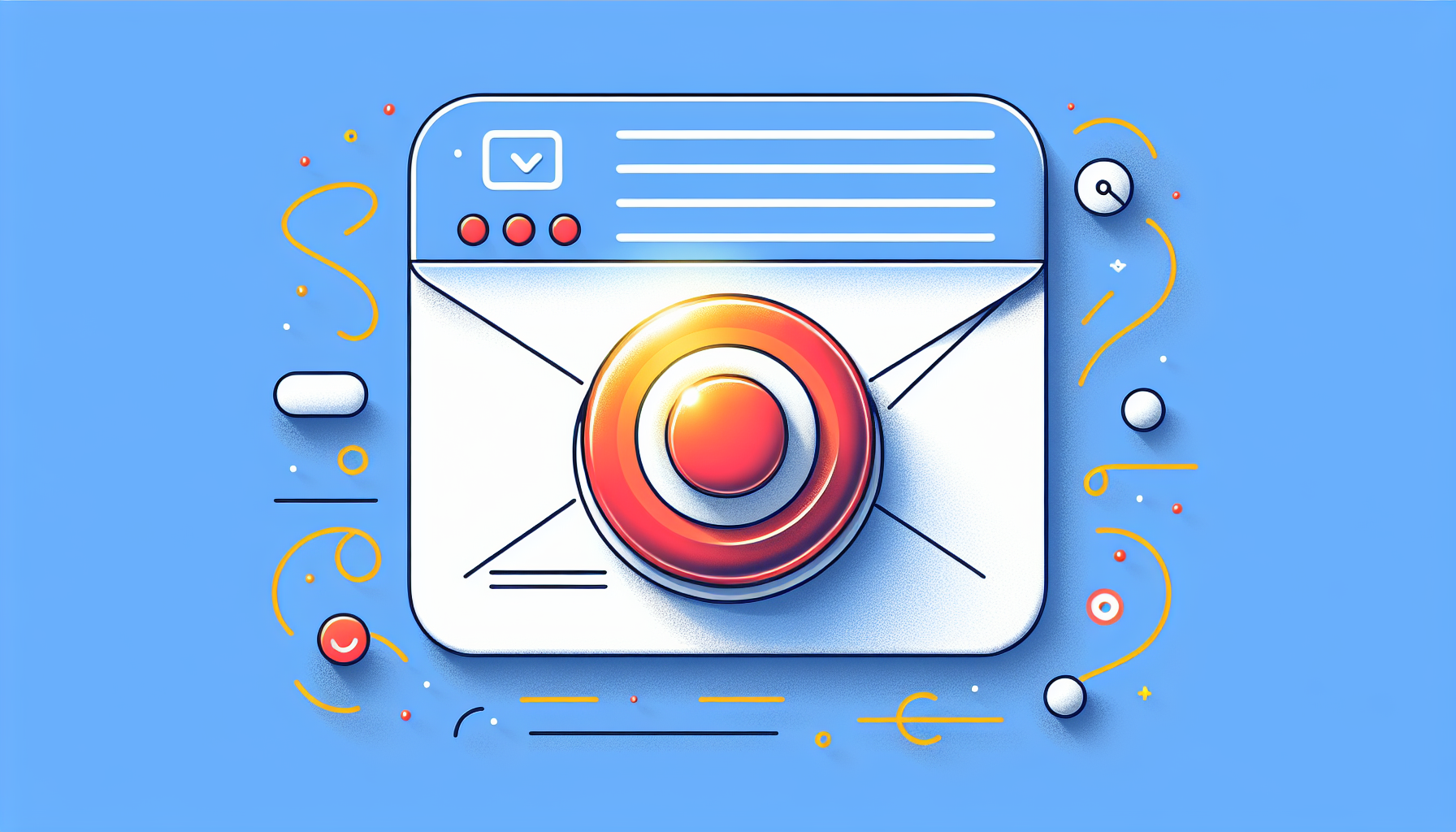
Top 15 Common Email Marketing Mistakes to Avoid
Email marketing is crucial for businesses, but common email marketing mistakes can severely impact your results. This article explores the top 15 mistakes marketers often make and provides actionable tips to avoid them, helping you boost your campaign’s effectiveness.
Key Takeaways
-
Craft compelling and truthful subject lines, avoiding clickbait and using personalization to enhance open rates.
-
Segment your audience and tailor content to meet their specific needs, using CRM tools to automate and refine targeted messaging.
-
Optimize emails for mobile users with responsive design and thorough testing across various devices to ensure a seamless user experience.
Introduction
Email marketing, a vibrant lifeline for many businesses, is an art that blends strategy and creativity to promote products, build customer loyalty, and drive sales. Yet, its potential is often undermined by an email marketing mistake in an email marketing campaign. From poorly crafted subject lines that doom emails to the abyss of the unread, to neglecting the power of personalization, these mistakes can impede your success in a successful email marketing campaign.
Fear not, for this guide, steeped in industry insights, is your beacon to navigate the choppy waters of email campaigns. Embrace the knowledge, seize the tools, and refine your approach to foster connections that flourish into long-term customer relationships.
Poor Subject Lines

Crafting the perfect subject line is akin to a key that unlocks the treasure trove of your reader’s attention. It is the first impression, the critical handshake between your brand and the recipient’s curiosity. Yet, one common misstep is the use of poor subject lines—those that do not resonate or, worse, mislead.
It’s vital to steer clear of the temptation to use clickbait or vague promises that fail to deliver. Instead, personalization and relevance should be your compass, guiding every word to ensure that your emails are not just opened but also anticipated with genuine interest.
Avoiding Clickbait
In the pursuit of high open rates, some marketers succumb to the siren call of clickbait. Sensational headlines may provide a fleeting spike in attention, but they erode trust as quickly as they attract the eye. Your audience craves authenticity, not a bait-and-switch that leaves them feeling deceived.
To foster a relationship built on trust, avoid exaggerated claims or buzzwords that smack of desperation. Instead, focus on crafting subject lines that offer real value and speak truthfully to the content within—a strategy that not only respects your audience but also strengthens your brand’s integrity.
Personalization Techniques
Personalization is the secret spice that adds flavor to your email subject lines, enticing your readers to savor the contents of your message. By addressing your recipients directly and acknowledging their unique interests or recent interactions, you sprinkle a sense of exclusivity that can significantly enhance open rates. It’s a gesture that says, “We see you, we value you, and we’ve tailored this just for you.”
Embrace personalization as a tool not just to capture attention, but to cultivate a connection that resonates with the individual behind the email address.
Not Segmenting Your Audience

Imagine speaking to a stadium full of diverse individuals—without segmentation, your marketing emails are a one-size-fits-all speech that fails to resonate. Segmentation is the strategic division of your audience into distinct groups, enabling you to tailor your messaging to meet varied needs and interests. By segmenting, you sharpen the focus of your campaigns, enhancing relevance and driving higher engagement.
Whether it’s demographics, purchase history, or behavior, using segmentation allows you to deliver content that feels handpicked for each recipient, forging stronger connections and paving the way for conversion.
Using CRM Tools
The use of CRM tools is like having a master key to unlock the full potential of audience segmentation in your email campaigns. These powerful platforms are treasure troves of data, offering insights into customer behavior and preferences that can be harnessed to deliver highly targeted communications.
With CRM tools, you can:
-
Automate processes
-
Track interactions
-
Refine your strategy
-
Keep your messaging aligned with the interests and needs of different audience groups
Embrace these tools to enhance personalization, efficiency, and ultimately, the success of your email marketing endeavors.
Tailoring Content
Tailoring content is the art of crafting messages that resonate on a personal level with each segment of your audience. It’s about speaking directly to their needs, desires, and pain points in a way that generic messaging never could. By segmenting your audience and then creating content that addresses the specifics of each group, you enhance engagement and foster a sense of understanding and care. Some key benefits of tailoring content include:
-
Increased engagement and interaction with your audience
-
Improved conversion rates and sales
-
Enhanced brand loyalty and customer satisfaction
-
Better understanding of your audience’s needs and preferences
-
More effective communication and messaging
By taking the time to tailor your content, you can create a more meaningful and impactful connection with your audience.
This not only improves the effectiveness of your email marketing but also strengthens the bond between your brand and its followers.
Ignoring Mobile Users

In an age where smartphones are almost an extension of ourselves, ignoring mobile users in your email marketing strategy is akin to turning a blind eye to a significant portion of your audience. With a substantial number of emails being accessed on-the-go, optimizing your campaigns for mobile is no longer optional—it’s imperative.
From responsive design to legible content, ensuring that your emails are mobile-friendly is a critical step towards engaging with your audience wherever they are. Don’t let your message fall flat on small screens; instead, let it shine by embracing mobile optimization.
Mobile-Friendly Design Tips
When it comes to mobile-friendly design, simplicity is your ally. A single-column layout, clean formatting, and legible fonts are the cornerstones of a mobile-optimized email that catches the eye and keeps the reader scrolling. Remember that your audience is interacting with your content on smaller screens, so every element must be crafted with accessibility in mind.
From ensuring alt text for images to optimizing the subject line length, these mobile-friendly design tips are not just recommendations—they’re essential practices that can dramatically improve the mobile user experience.
Testing Across Devices
The diversity of mobile devices and email clients means your emails must be chameleons, adapting seamlessly to any environment. Testing across devices is the only way to ensure that your message is consistently delivered, regardless of screen size or operating system. By conducting thorough tests, you can catch and correct any issues that could disrupt the user experience.
It’s a step that underscores your commitment to quality and ensures that your audience receives a polished, professional message every time.
Failing to Include a Clear Call to Action

Every email you send should guide the reader on a journey, and the call to action (CTA) is the signpost that directs them towards the desired destination. A clear, compelling CTA is the pulse of your email, the moment where interest transforms into action. Without it, your readers are left wandering aimlessly through your content, unsure of what step to take next.
To avoid this common misstep, ensure that your CTAs are unmistakable, enticing, and strategically placed to capture clicks and convert interest into measurable outcomes.
Creating Effective CTAs
The art of crafting an effective call to action lies in its ability to not only catch the eye but also to resonate with the reader’s aspirations and needs. Using action-oriented language that communicates the benefit of clicking can significantly enhance the appeal of your CTA.
Whether it’s the excitement of discovering something new or the exclusivity of joining a select group, your CTA should offer an immediate value proposition that is too enticing for the reader to pass up.
Placement and Visibility
The strategic placement of your CTA can be the difference between a successful conversion and a missed opportunity. Positioning your CTA prominently within your email, ideally above the fold, ensures that it captures attention even during a quick scan. Utilize design elements such as bright colors, bold text, or large buttons to make your CTA stand out and invite action.
Remember, if your CTA isn’t noticeable, it’s as good as non-existent.
Overloading Emails with Images

Images have the power to transform the visual appeal of your emails, but when used excessively, they can overwhelm the reader and lead to technical hiccups that hinder your campaign’s success. Too many images can slow load times, trigger spam filters, and even cause rendering issues on different devices.
To avoid these pitfalls, it’s crucial to strike a balance between text and imagery, ensuring that each email is not only visually engaging but also optimized for performance and deliverability.
Balancing Text and Images
Balancing text and images in your emails is like choreographing a dance—the right ratio ensures a performance that captivates and delights. Aim for a harmonious blend where images complement the text, breaking it up and adding visual interest without dominating the message. Remember, images should enhance your communication, not replace it.
Provide alt text for images to ensure that even if they don’t display, your message still gets across, and your CTA remains clear and clickable.
Optimizing Image Size
In the digital realm, size truly matters—especially when it comes to images in your emails. High-resolution images that are not optimized can lead to sluggish load times and frustrated users. By compressing image files without sacrificing quality, you ensure that your emails load quickly, look sharp, and provide a seamless experience for your readers.
This simple yet effective practice not only elevates the aesthetic of your emails but also contributes to better engagement and higher conversion rates.
Neglecting Welcome Emails
The welcome email is the opening act of your email relationship with a new subscriber, setting the tone for future communications. It’s a unique opportunity to:
-
Make a strong first impression
-
Begin the journey of engagement
-
Connect with the subscriber
-
Reaffirm their decision to join your list
-
Prime them for the value that lies ahead
Neglecting to send a welcome email is a missed chance to make the most of this opportunity.
By crafting a warm, informative, and value-packed welcome email, you reinforce the subscriber’s choice and pave the way for a lasting relationship.
Elements of a Great Welcome Email
A great welcome email should:
-
Introduce who you are
-
Express gratitude for the subscription
-
Set clear expectations about the type of content and frequency of emails
-
Consider offering a token of appreciation, such as a discount or exclusive content, that adds immediate value to the subscriber’s experience.
This not only delights your new audience member but also encourages them to engage with your brand right from the start.
Automation Setup
In the fast-paced world of digital marketing, automation is the ally that ensures no subscriber is left behind. By setting up automated welcome emails, you guarantee that each new subscriber is greeted timely, reinforcing the connection from the moment they opt-in. Regularly refresh these automated messages to keep the content relevant and engaging.
This not only streamlines the process, saving precious time and resources but also maintains a consistent level of engagement with your audience.
Sending Emails at the Wrong Time
Timing is not just a component—it’s the backbone of a successful email marketing strategy. Sending emails at the wrong time can result in missed opportunities and diminished engagement. It’s akin to showing up at a party after everyone’s gone home.
To ensure your emails arrive when your audience is most receptive, it’s crucial to delve into the analytics and discern the optimal moments for engagement. By hitting the send button at the right time, you elevate the chances of your emails being opened, read, and acted upon.
Best Times to Send Emails
Discovering the best times to send emails requires a mix of industry wisdom and a deep understanding of your specific audience. While research suggests that certain days and times—like Tuesday mornings—tend to perform well universally, it’s important to remember that each audience is unique.
To maximize your email campaign’s effectiveness, consider conducting your own A/B tests to pinpoint the prime times that resonate with your subscribers. By aligning your send times with your audience’s habits, you can significantly improve engagement rates and drive better campaign results.
Analyzing Send History
The treasure trove of data within your send history is a map to uncovering the golden times for email engagement. Analyzing past campaign performances gives you insights into when your subscribers are most likely to interact with your emails.
Utilize email automation tools that can fine-tune send times based on these patterns, ensuring that your messages reach inboxes at the moment when they’re most welcome. The result is a strategy that’s not just based on best practices, but one that’s personalized to the rhythms of your unique audience.
Not Personalizing Emails
In a world where consumers are bombarded with generic advertising, personalization in email marketing is not just appreciated—it’s expected. Personalizing emails goes beyond using a recipient’s name; it’s about crafting messages that resonate with the individual’s preferences, behaviors, and needs. By forgoing personalization, you risk your emails being lost in the sea of sameness.
Embrace the tools and strategies that allow for a tailored approach, and watch as your engagement and conversion rates climb.
Using Recipient’s Name
The simple act of using a recipient’s name can transform an impersonal broadcast into a personal conversation. It’s a sign of respect and recognition that cuts through inbox clutter and grabs attention. However, personalization doesn’t end there. It’s about creating a curated experience that reflects the recipient’s past interactions, preferences, and behaviors.
By personalizing your emails, you’re not just sending a message—you’re starting a dialogue that fosters deeper engagement and loyalty.
Dynamic Content
Dynamic content is the magic ingredient that allows you to tailor the email experience for each subscriber. It adapts the content of your emails based on the recipient’s data, such as their location, past purchases, or browsing behavior. This level of customization ensures that every message is relevant, increasing the likelihood of engagement and conversion.
In the digital marketing arena, dynamic content is not just a tool—it’s a game-changer for personalizing your email campaigns.
Ignoring Analytics
Turning a blind eye to analytics is akin to sailing a ship without a compass. Without monitoring key metrics, you’re navigating the complex seas of email marketing blindfolded. Analytics provide the critical insights needed to gauge the success of your campaigns and to refine your strategy for future sends.
By ignoring analytics, you miss the opportunity to learn from your successes and failures, which is essential for growth and improvement in the ever-evolving landscape of email marketing.
Key Metrics to Track
Tracking key email marketing metrics is like keeping your finger on the pulse of your campaign’s health. Metrics like open rates, click-through rates, and spam complaints offer a snapshot of your emails’ performance. Regularly monitoring these metrics provides a feedback loop that helps you understand what resonates with your audience and what falls flat.
Armed with this data, you can continually refine your email strategy to better align with your audience’s preferences and behaviors, driving more meaningful engagement and better results.
Tools for Tracking
In the digital age, marketers are fortunate to have an arsenal of sophisticated tools at their disposal for tracking email analytics. Platforms like Mailchimp not only facilitate the sending of emails but also provide detailed reports on how those emails perform. These tools allow you to see which emails are opened, which links are clicked, and even which emails are shared, giving you valuable insights into your audience’s engagement with your content.
By leveraging these tools, you can make data-driven decisions that propel your email marketing forward.
Triggering Spam Filters
Navigating the treacherous terrain of spam filters is a challenge for even the most seasoned email marketers. Triggering a spam filter can be the kiss of death for your email campaign, relegating your carefully crafted message to the dreaded spam folder, never to be seen by its intended recipient.
To avoid this fate, it’s crucial to understand the triggers that set off spam filters and to craft your emails in a way that ensures they land in the inbox, where they belong.
Avoiding Spammy Language
Spam filters are on the lookout for certain red flags in your email content, and language is one of the biggest. Using spammy phrases or too much punctuation can raise alarms and prevent your email from reaching its destination. To stay on the safe side, avoid language that sounds too salesy or too good to be true.
Instead, focus on creating clear, concise, and honest content that communicates value to your readers without triggering those pesky spam filters.
Ensuring Deliverability
Ensuring the deliverability of your emails is like obtaining a VIP pass for your message—it helps you bypass the velvet rope of spam filters and gain direct entry into the inbox. To achieve this, it’s important to:
-
Employ authentication protocols like SPF, DKIM, and DMARC, which signal to email providers that your messages are legitimate.
-
Maintain a consistent sender name.
-
Include your physical business address in emails to further validate your authenticity and improve deliverability.
Not Cleaning Your Email List
An email list is a living entity, and like any living thing, it requires regular maintenance to stay healthy. Not cleaning your email list can lead to bloated, ineffective campaigns that waste resources and damage your sender reputation.
Removing inactive or unengaged subscribers from your list ensures that your emails are being sent to people who are genuinely interested in hearing from you, which can improve engagement rates and protect the integrity of your email marketing efforts.
Removing Inactive Subscribers
Inactive subscribers are like silent onlookers at a performance—they’re present, but they’re not engaging. Over time, they can drag down your engagement rates and harm your sender reputation. It’s essential to periodically review your email list and remove those who no longer interact with your content.
This process not only improves the health of your list but also ensures that your efforts and resources are focused on the audience members who are most likely to engage and convert.
Re-engagement Campaigns
Before you say goodbye to inactive subscribers, consider a re-engagement campaign as a last-ditch effort to reignite the spark. These targeted campaigns can remind subscribers why they fell for your brand in the first place, offering incentives or fresh content to pique their interest.
By personalizing these messages and addressing any potential concerns, you may be able to turn disinterested subscribers back into active participants in your brand’s story.
Ignoring Unsubscribe Requests
Ignoring unsubscribe requests is not just poor etiquette—it’s a direct violation of the trust between you and your audience. It can also lead to legal repercussions under laws like CAN-SPAM and GDPR. Respecting your subscribers’ wishes to opt-out is crucial for maintaining a positive relationship and a clean email list.
Ensure that the unsubscribe process is as smooth as possible to leave a lasting, positive impression, even as they exit.
Making Unsubscribing Easy
Making the unsubscribe process easy and straightforward is a critical aspect of a respectful email marketing strategy. A clear and visible unsubscribe link in every email is not only a legal requirement but also a gesture of goodwill. It communicates to your subscribers that you value their inbox and their right to choose what content they receive.
By simplifying this process, you minimize frustration and maintain a positive brand image.
Legal Compliance
Compliance with email marketing laws is non-negotiable. Regulations like CAN-SPAM and GDPR are designed to protect consumers’ rights and ensure fair and transparent communication practices. By adhering to these laws, you not only avoid hefty fines but also demonstrate to your subscribers that you are a trustworthy and law-abiding brand.
Regularly updating your practices to stay compliant is a crucial step in safeguarding your email marketing campaigns and your company’s reputation.
Underusing or Overusing Automation
Automation in email marketing is a double-edged sword. When used appropriately, it can enhance efficiency, allowing you to reach the right people with the right message at the right time. However, overreliance on automation can strip the personal touch from your communications, making your emails feel robotic and impersonal.
A balanced approach that combines the scalability of automation with the authenticity of personal engagement is key to maintaining a successful email marketing strategy.
Effective Use of Autoresponders
Autoresponders are a powerful tool in your email marketing arsenal. They allow you to:
-
Automate responses to common subscriber actions
-
Maintain consistent communication
-
Follow up on leads
-
Deliver targeted messages without the need for constant manual intervention.
However, it’s important to use autoresponders judiciously and ensure that they complement, rather than replace, genuine interactions with your subscribers.
When to Use Manual Sends
While automation can handle much of the heavy lifting in email marketing, there are times when a manual send is more appropriate. Personalized emails, time-sensitive announcements, or complex customer service issues often require a human touch that can’t be replicated by automation.
Knowing when to step in and send a manual email can make all the difference in maintaining a personal connection with your audience and addressing their needs effectively.
Forgetting to Test Emails
Sending out an email without proper testing is like serving a dish you haven’t tasted—it might look good, but you won’t know how it really performs until it’s too late. Testing is an essential step in the email marketing process, allowing you to catch errors, optimize for different devices, and ensure that your emails look and function as intended.
By neglecting to test, you risk damaging your brand’s reputation with emails that are broken or ineffective.
A/B Testing
A/B testing is a scientific approach to email marketing, allowing you to compare different versions of your emails to see which resonates best with your audience. By testing elements like subject lines, images, or calls to action, you can gather data on what drives engagement and conversions.
This empirical evidence then informs your future campaigns, leading to more effective and impactful email marketing strategies.
Checking Links and Content
It’s the small details that often make the biggest impact, and in email marketing, this means ensuring every link is functional and every piece of content is accurate. Broken links can frustrate recipients and damage your credibility, while typos or outdated information can detract from your professional image.
Thorough checks before sending are essential to maintain the quality and effectiveness of your communications.
Not Following Best Design Practices
Email design is more than just aesthetics—it’s about creating an engaging and accessible experience for your audience. Ignoring best design practices can lead to emails that are difficult to read or navigate, resulting in a poor user experience and lowered engagement. By adhering to design principles that prioritize readability, visual appeal, and brand consistency, you can create emails that not only look great but also drive results.
Consistent Branding
Consistent branding across all your email communications is vital to building a strong and recognizable brand. It creates a sense of familiarity and trust with your audience, reinforcing your brand’s identity with each interaction. Whether it’s through the use of consistent color schemes, fonts, or imagery, maintaining a unified brand presence in your emails contributes to a cohesive and memorable brand experience.
Readability and Accessibility
Ensuring that your emails are readable and accessible to all is not only a best practice but also an ethical imperative. By using clear fonts, adequate spacing, and high-contrast colors, you make your content accessible to a wider audience, including those with visual impairments.
Embracing accessibility in your email design demonstrates your commitment to inclusivity and can significantly widen your reach.
Summary
As we draw the curtains on our journey through the labyrinth of email marketing, remember that the road to mastering this powerful tool is paved with continuous learning and adaptation. By avoiding the common mistakes outlined in this guide, you’re well on your way to crafting email campaigns that captivate, engage, and convert. Embrace the insights, wield the strategies with confidence, and watch as your email marketing propels your brand to new heights. Go forth and email with purpose and precision, and let every message be a step towards greater success.
Frequently Asked Questions
What impact does personalization have on email marketing campaigns?
Personalization in email marketing campaigns can have a significant positive impact on engagement and click rates by tailoring content to recipient preferences and past behaviors, resulting in higher open and conversion rates.
Why is it important to test emails before sending?
It is important to test emails before sending to identify and fix any issues with design, functionality, or content, ensuring a positive user experience and meeting marketing objectives.
How does segmenting your audience improve email marketing effectiveness?
Segmenting your audience improves email marketing effectiveness by allowing personalized content that addresses the specific needs and interests of different groups, leading to higher engagement and conversion rates. Tailoring your content to different segments can significantly improve your email marketing success.
Can you explain the importance of a clear call to action in an email?
A clear call to action in an email is important because it guides readers towards the desired action, such as making a purchase or signing up for a service, and is crucial for driving conversions from email campaigns.
What are the consequences of triggering spam filters with your emails?
Triggering spam filters can result in your emails being directed to the spam folder, which decreases their visibility and open rates and may damage your sender reputation. It’s crucial to avoid triggering spam filters to ensure that your emails reach their intended recipients.
Are you interested in finding out more? Browse the rest of our blog for other marketing tips. If you’re ready to create your first email, survey, sign-up form, or landing page then register for a free trial to get the tools you need to build powerful marketing campaigns!
© 2024, Vertical Response. All rights reserved.



